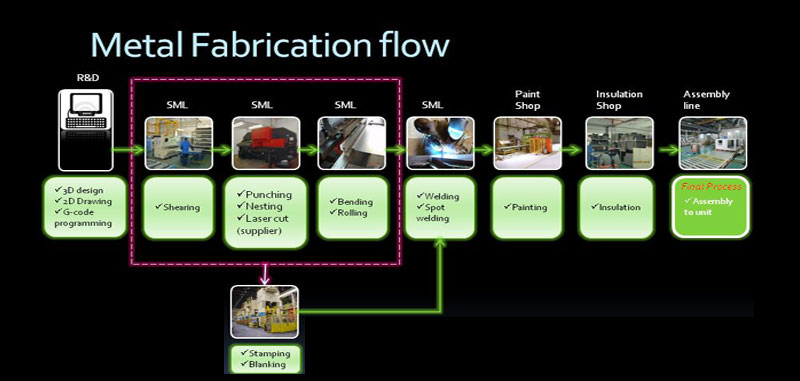

Research and assessment are crucial steps in the custom metal fabrication process to ensure cost-effective production while meeting the unique design requirements. Here's how research plays a role in assessing materials and methods: Material Selection helps in identifying the appropriate materials for the specific application. Factors like desired properties (strength, corrosion resistance, heat resistance), budget constraints, and environmental considerations are taken into account. By understanding the characteristics and availability of different materials (such as steel, aluminum, stainless steel, or alloys), manufacturers can make informed decisions on material selection.
Few examples of custom fabrication techniques that produce quality fabrications with long-term value.
Setting design intent is indeed an important technique in custom metal fabrication. It involves establishing clear and comprehensive design specifications and objectives for the fabrication process. Here's how setting design intent contributes to the success of a custom metal fabrication project:
Setting design intent helps in clearly defining the desired outcome and functionality of the fabricated product. It involves understanding the specific requirements, constraints, and performance expectations. By establishing clear design intent, manufacturers can ensure that all stakeholders have a shared understanding of the project goals.
This process is ideal for custom metal fabrications such as:
Setting design intent is highly relevant for custom metal fabrications in the field of feed and grain storage, including tanks, silos, hoppers, and related equipment with material handling functionality.
Liquid food storage with quality control capabilities, such as the ability to heat syrup to maintain it in liquid form, setting design intent becomes crucial.
Custom metal fabrications for wrap-around spiral staircases with cross-over platforms for access to storage units of different heights require careful consideration of design intent.
The design intent ensures that the fabricated components meet the specific requirements, adhere to safety standards, provide ergonomic access, and enhance the overall aesthetics of the space.
All custom fabrication may begin with MTC Shape Cutting Files, Pro Nest Files, or AutoCAD Files, or even an old-fashioned Hand-Drawn Plans. With the right engineering expertise, Regardless of the initial format, the chosen files or plans are typically used as a basis for further development, refinement, and collaboration among designers, engineers, and fabricators.
Metal cutting and forming are two fundamental processes in custom metal fabrication. Let's take a closer look at each of these processes:
Metal cutting and forming techniques are often combined in custom metal fabrication projects to achieve the desired final product. The specific methods and processes chosen depend on factors such as the type of metal, desired shape, complexity of the design, production volume, and accuracy requirements. Skilled fabricators and specialized equipment are utilized to carry out these processes effectively and efficiently.
Mechanical and CNC hydraulic press brakes. Plate rolling and angle rolling machines. Beam punches and CNC punching machines. Multi-function ironworkers for sheering, punching, and bending. A full-service metal fabricator will likely have all of the above equipment in-house, which can save both time and resources.
Custom welding and assembling are crucial processes in metal fabrication that involve joining different metal components together to create a final product. The choice of welding or assembling method depends on factors such as the type of metal, joint configuration, strength requirements, project specifications, and desired aesthetics. Skilled welders and fabricators use their expertise to select the most appropriate techniques and execute precise and reliable welding and assembling processes.
• Metal bead blasting or other surface prep to ensure paint or other coating adheres to the metal’s surface
• Custom painting and drying with controlled paint booths to expedite dry times and proper hardening.
• Hot-dip galvanizing to coat every nook and cranny of the metal fabrication to prevent moisture from compromising structural integrity
• Metal powder coating for more decorative finishing on detailed railings or metal signage.
From design to delivery, Ghasiram Baijnath Group offers finishing techniques like these and other fabrication services that reduce project labor costs and increase product ROI.
Give us a chance to fabricate and finish your custom metal fabrication project. We’re ready to say, “Yes, we can do that!” Contact us today.